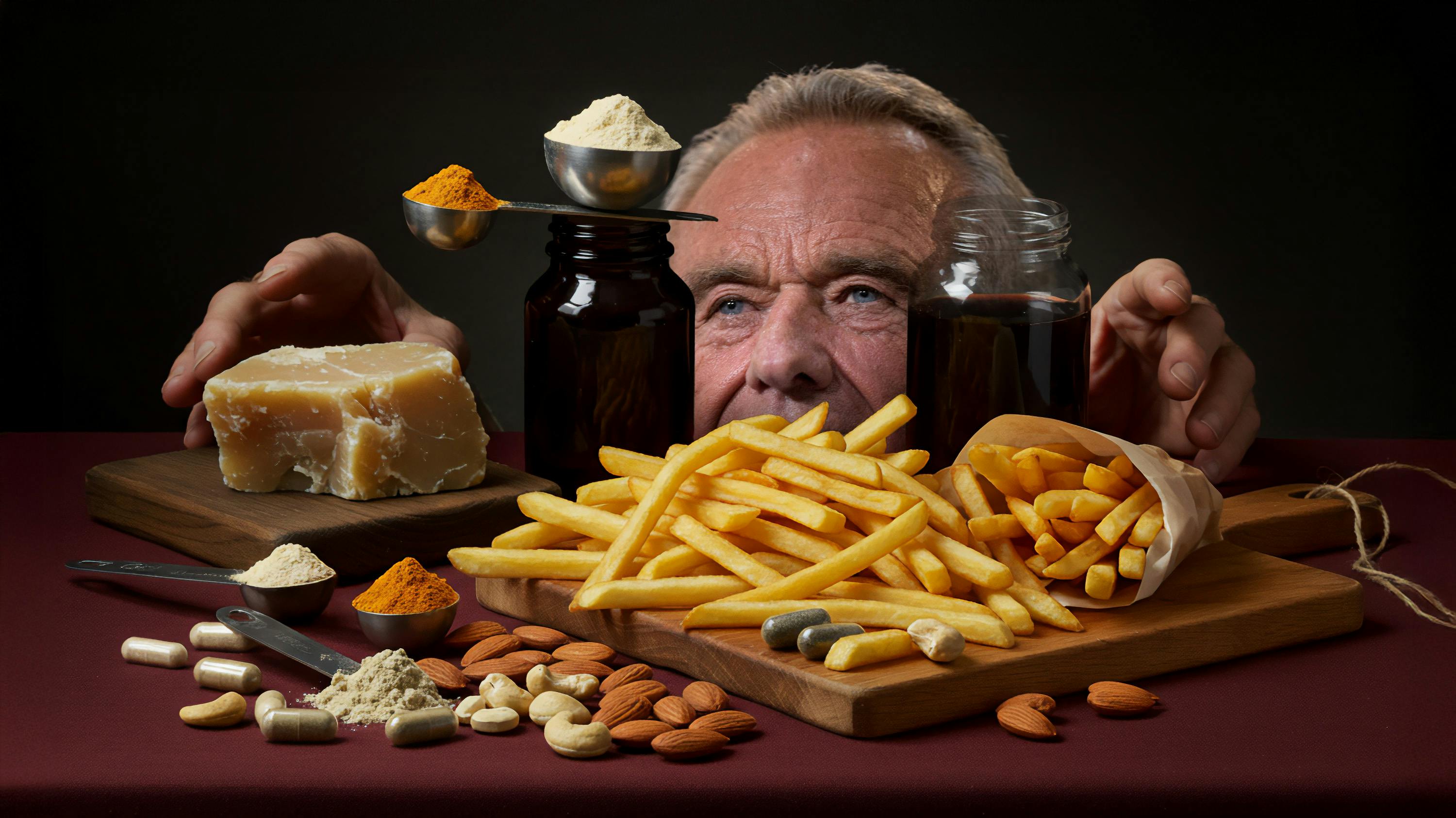| Welcome, Weekenders! In this newsletter: |
| • The Arena: Why sports leagues learned to love creators and stop fighting them |
| • The Top 5: The startups hoping for a “MAHA” boom |
| • Power and Influence: Tech’s Trumpists have no regrets |
| • Plus, our Recommendations: A sinister snafu; when India changed the world; Amy Sherman-Palladino strikes back |
| |
| Why can’t we have nice things? |
| Because they give us the willies, apparently. OpenAI has undone part of the latest update to its GPT‑4o model after people complained about the personality built into it, which seemed overly fawning. I’m still chuckling after my conversation with Kristian Hammond, a Northwestern University computer science professor, about why we get unsettled by such behavior. He brought up a particular fictional character. |
| “Eddie Haskell from ‘Leave It to Beaver,’ the kid who lived across the street,” said Hammond. “He would come over and be like, ‘Oh, you’re looking so lovely today, Mrs. Cleaver.’ And it was clear he was just, like, an irritating asshole because he was being nice in an extreme way.” |
| To a large degree, I think our discomfort with the model’s behavior says as much about us humans as it does about the bots we’re building. Very honestly, I think it reflects our general discomfort with positive feedback, which we don’t dispense to each other in great amounts. (Probably that reality warrants a little more self-reflection.) And because the model’s behavior seemed quite unhumanlike, that reminded us it isn’t close to being human. It gives us the icks, making us less eager to use it—it’s some version of the uncanny valley effect that’s more visually apparent when Dall-E generates some six-nosed monstrosity. |
| I’m pretty sure I noticed the model’s personality change several days before OpenAI made this change. (To me, the persona read as “millennial bro,” which I suppose is what Eddie Haskell would be in modern terms.) I didn’t like it, but I also had no desire to curb my growing ChatGPT use, so I simply asked the bot to drop the act. It complied. That OpenAI felt compelled to take apart the model en masse tells me it has considerable work to do in educating users on how they can use its products and, more generally, in making its products more usable. |
| OpenAI is far from the only AI company with bad design. I actually can’t think of any product in the industry that is well designed. Most of it is about as sophisticated as word processing in the 1980s, and even that might be an optimistic conclusion. |
| As far as improving the bots’ personalities, the task will take some considerable time to get there, Hammond cautioned me. That’s simply because there isn’t a vast amount of existing written work to use in model training that would reflect what we ideally want from a bot: polite, courteous, friendly—humanish but nothing maximalistic. “We don’t have the right data to teach it to be ‘normal.’ How do you identify what ‘normal’ is? The extremes are easier. Getting to the middle of the road is tough,” Hammond said. |
| Josh Kushner, a Warren Buffett in the Making? |
| I don’t like to be the type of person who goes around saying, ‘I told you so!’ But as my former colleague Kate Clark and I did point out a few years ago, the most interesting fella in venture capital continues to be Thrive Capital’s Josh Kushner. |
| He’s always doing it all. Helping Sam Altman finish mountainous amounts of fundraising. Buying Life magazine. And now launching a new part of Thrive called Thrive Holdings, which, as the name suggests, intends to buy and hold companies for “the long term,” as Kushner wrote on X. |
| I’m fascinated to know exactly what Kushner means by “long term.” (He wouldn’t comment for this column.) It could mean anything, and I detect a real strategy in leaving it totally undefined. Doing so gives Kushner real flexibility with finding investors: Unlike those in VC, they presumably won’t expect Thrive Holdings to show bountiful returns anytime soon. |
| I’m also fascinated to know exactly what type of companies he plans to acquire. Kushner has left that part of his plan open-ended, too. If they’re tech companies, he’ll have his work cut out for him. There’s a reason why Warren Buffett, the grand poobah of buying and holding, famously doesn’t invest much in tech—largely because many tech companies don’t have much of what Buffett famously calls a “moat,” a well-fortified competitive advantage, as more traditional businesses do. The tech industry courses with immense, fast-paced change. In 2005, everyone seemed to have a BlackBerry. By 2015, almost no one did. Yet then as now, plenty of moms will receive See’s Candies for Mother’s Day, which helps explain why Buffett’s Berkshire Hathaway has owned that company since 1972. |
| If Thrive Holdings does make money by buying up tech businesses and adopts Buffett’s preferred investing time horizon—forever—or one close to it, Kushner would end up showing how wrongheaded Buffett has been for the past several decades. No easy feat!—Abram Brown |
|
|
 |
| This week we welcome a brand-new addition to The Information’s Tech Sports Team Owners Database, as Sukhinder Singh Cassidy has joined the ownership of the WNBA’s Toronto Tempo. A longtime Bay Area resident and native Canadian, Singh Cassidy is currently CEO of Xero, an accounting software company, and an alum of StubHub, Google and Amazon. |
| “I’ve spent my career looking at and driving representation for women in tech,” Singh Cassidy told me this week after joining Serena Williams and private equity investor Larry Tanenbaum in the ownership group of the W’s newest franchise, which will begin playing in 2026. For that reason, she said, becoming a W owner aligned with her values, but it wasn’t the only factor in her decision to invest in sports. |
| Singh Cassidy had spent the last three years or so considering which league she might put her money into. As an avid hoops fan and Golden State Warriors supporter, she narrowed down her search to professional basketball and ultimately chose the W. “The WNBA just has much more upside,” she said. “Many of these franchises are starting, but the price of entry—and the opportunity as media rights go up—is pretty exponential.” |
| Singh Cassidy comes to the WNBA with a range of ideas about how to improve fan experience and maximize ticket value, ones bolstered by her time as StubHub’s president. “And of course, I’m a proud Canadian,” she said. “The Tempo won’t just be Toronto but will be Canada’s team.” |
| The Arena is a new franchise within Weekend that covers the business and future of sports. Read more of its coverage from The Information’s Sara Germano. |
| |
|
|
 |
|
| As recently as the last decade, sports leagues looked at fan content as something to stamp out of existence. Back then, they viewed it as pirated material—and a threat to their all-important content deals with broadcast TV networks, which accounted for a major part of their revenues. |
| Ohhh, how things change. It’s something of a substantial understatement to say media consumption habits have drastically changed over the past decade, particularly among young people. And as social media creators have increasingly eaten away at traditional sports media, the leagues now see influencers as essential partners, our Sara Germano reports. |
| When Sara discussed the matter with Bob Carney, the NBA’s senior vice president of digital and social content, he described the league’s strategy as an attempt to establish a “communal viewing” experience. That’s NBA speak for using creators to steer audiences toward live broadcasts and keep the conversation going when the game ends. As he told Sara, the plan is nothing less than the league’s “North Star.” |
|
 |
|
| If Robert F. Kennedy Jr. gets his way, what we eat, drink and consume in this country is going to change tremendously. For a widening number of startups, this shift, dubbed “Make America Healthy Again” and led by the Health Department chief, could be a golden opportunity, our Ann Gehan finds. They see the change in government regulations and consumer tastes as a chance to grow sales—and eventually get bought by Big Food, which could decide it’s easier to buy a couple of these startups than develop their own brands in-house. |
|
 |
|
| It’s not an exaggeration to say things haven’t been going smoothly with the economy since President Donald Trump took office in January, and even though many of the tech elite who threw their support behind him did so for economic reasons, his support in Silicon Valley remains surprisingly intact, according to our Nick Wingfield and Theo Wyatt. |
| “I think what’s happening is everybody knows Trump is retaliatory and punitive,” said Adam Kovacevich, CEO of Chamber of Progress, a center-left tech trade organization backed by Amazon, Google and other companies. “And I also think companies learned from the first term that it’s better to use honey with Trump than vinegar. He’s not getting candid feedback from the business community.” |
| Abram Brown, editor of The Information’s Weekend section, needs to go sort through all his Temu binge orders. Reach him at abe@theinformation.com. |
| |
 |
| Listening: “SNAFU” (iHeart Radio) |
| Snafus are awful to live through—but ones that happen to other people generally make for riveting tales. Comedian Ed Helms has been having great fun recounting such chicanery with this podcast for several seasons, and he’s back with a doozy for a third season: a snafu within a snafu, as he puts it. He looks at a forgotten part of Prohibition when the government introduced Formula 6, a toxic chemical additive that made industrial alcohol undrinkable. That move led to devastating consequences and what amounts to “the first modern American culture war,” Helm says.—A.B. |
| Reading: “The Golden Road” by William Dalrymple |
| A strong argument could be made that the 21st century will be India’s century. William Dalrymple would argue such an occurrence wouldn’t be the first time India has reshaped the planet. |
| From roughly the third century to the 13th century, India exerted a great amount of cultural and economic influence over a considerable chunk of the developed world (as it existed then), establishing what Dalrymple variously calls the “Indosphere” and “the Golden Road” (hence the title). |
| What a marvelous, fascinating realm it was: a domain from which came “not just pioneering merchants, astronomers and astrologers, scientists and mathematicians, doctors and sculptors, but also the holy men, monks and missionaries.” Emanating from those religious figures, Buddhism was perhaps Ancient India’s most widespread export,one promulgated with great enthusiasm by Emperor Ashoka. Ashoka fancied himself an enlightened sort of ruler and ordered Buddhist edicts carved in stone throughout his kingdom; these are some of the earliest surviving Buddhist texts. |
| In “The Golden Road,” Dalrymple takes great care to show how we don’t give enough credit to the thinkers and doers of ancient India, who outpaced Western innovation by centuries. Obviously, Ashoka was one, but he was also something of a cautionary tale. As he built his empire, he promised his subjects he’d be available to them “at any time, anywhere.” Meanwhile, he was consistently miserable, historical records show, and perhaps partly because he was an early example of a leader who didn’t know when to log off.—A.B. |
|